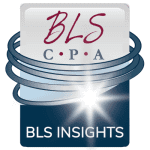 In August 2016, the Financial Accounting Standards Board (FASB) issued ASU 2016-14, Not-for-Profit Entities, with the intent of providing more useful information to donors, grantors, creditors, and other users of not-for-profit (NFP) financial statements. The ASU makes a number of changes and will affect the financial statements of all NFP entities. The main provisions of this ASU require a NFP to:
In August 2016, the Financial Accounting Standards Board (FASB) issued ASU 2016-14, Not-for-Profit Entities, with the intent of providing more useful information to donors, grantors, creditors, and other users of not-for-profit (NFP) financial statements. The ASU makes a number of changes and will affect the financial statements of all NFP entities. The main provisions of this ASU require a NFP to:
Report investment return net of external and direct internal investment expenses and no longer require disclosure of those netted expenses
- Provide the following enhanced disclosures about:
- Present on the face of the statement of activities the amount of the change in each of the two classes of net assets (as noted in item 1) rather than that of the currently required three classes (as noted in item 1). An NFP would continue to report the currently required amount of the change in total net assets for the period.
- Present on the face of the statement of financial position amounts for two classes of net assets (with donor restrictions and without donor restrictions) at the end of the period, rather than for the currently required three classes (unrestricted, temporarily restricted, and permanently restricted) as well as the currently required amount for total net assets.
-
- Amounts and purposes of governing board designations, appropriations, and similar actions that result in self-imposed limits on the use of resources without donor-imposed restrictions as of the end of the period.
-
- Composition of net assets with donor restrictions at the end of the period and how the restrictions affect the use of resources.
-
- Qualitative information that communicates how an NFP manages its liquid resources available to meet cash needs for general expenditures within one year of the balance sheet date.
-
- Quantitative information, either on the face of the balance sheet or in the notes, and additional qualitative information in the notes as necessary, that communicates the availability of an NFP’s financial assets at the balance sheet date to meet cash needs for general expenditures within one year of the balance sheet date. Availability of a financial asset may be affected by (1) its nature, (2) external limits imposed by donors, grantors, laws, and contracts with others, and (3) internal limits imposed by governing board decisions.
-
- Amounts of expenses by both their natural classification and their functional classification. That analysis of expenses is to be provided in one location, which could be on the face of the statement of activities, as a separate statement, or in notes to financial statements.
-
- Method(s) used to allocate costs among program and support functions.
-
- Underwater endowment funds, which include required disclosures of (1) an NFP’s policy, and any actions taken during the period, concerning appropriation from underwater endowment funds, (2) the aggregate fair value of such funds, (3) the aggregate of the original gift amounts (or level required by donor or law) to be maintained, and (4) the aggregate amount by which funds are underwater (deficiencies), which are to be classified as part of net assets with donor restrictions.
- Continue to present on the face of the statement of cash flows the net amount for operating cash flows using either the direct or indirect method of reporting but no longer require the presentation or disclosure of the indirect method (reconciliation) if using the direct method.
- Use, in the absence of explicit donor stipulations, the placed-in-service approach for reporting expirations of restrictions on gifts of cash or other assets to be used to acquire or construct a long-lived asset and reclassify any amounts from net assets with donor restrictions to net assets without donor restrictions for such long-lived assets that have been placed in service as of the beginning of the period of adoption (thus eliminating the current option to release the donor-imposed restriction over the estimated useful life of the acquired asset).
The ASU is effective for annual reporting periods beginning after December 15, 2017. We recommend NFP organizations and their accountants begin meeting and discussing what part of their financial statements may be affected by the ASU. In addition, NFP organizations may want to work with its accountants to do a mockup of its most recently issued financial statements under ASU. The mockup would familiarize the NFP organization’s management and finance committee with the new format and provide a sufficient amount of time for questions to be asked and answered. Preparing and planning for implementation now will aid in a smooth transition at the adoption date.
Photo by Dave.Miles (License)
